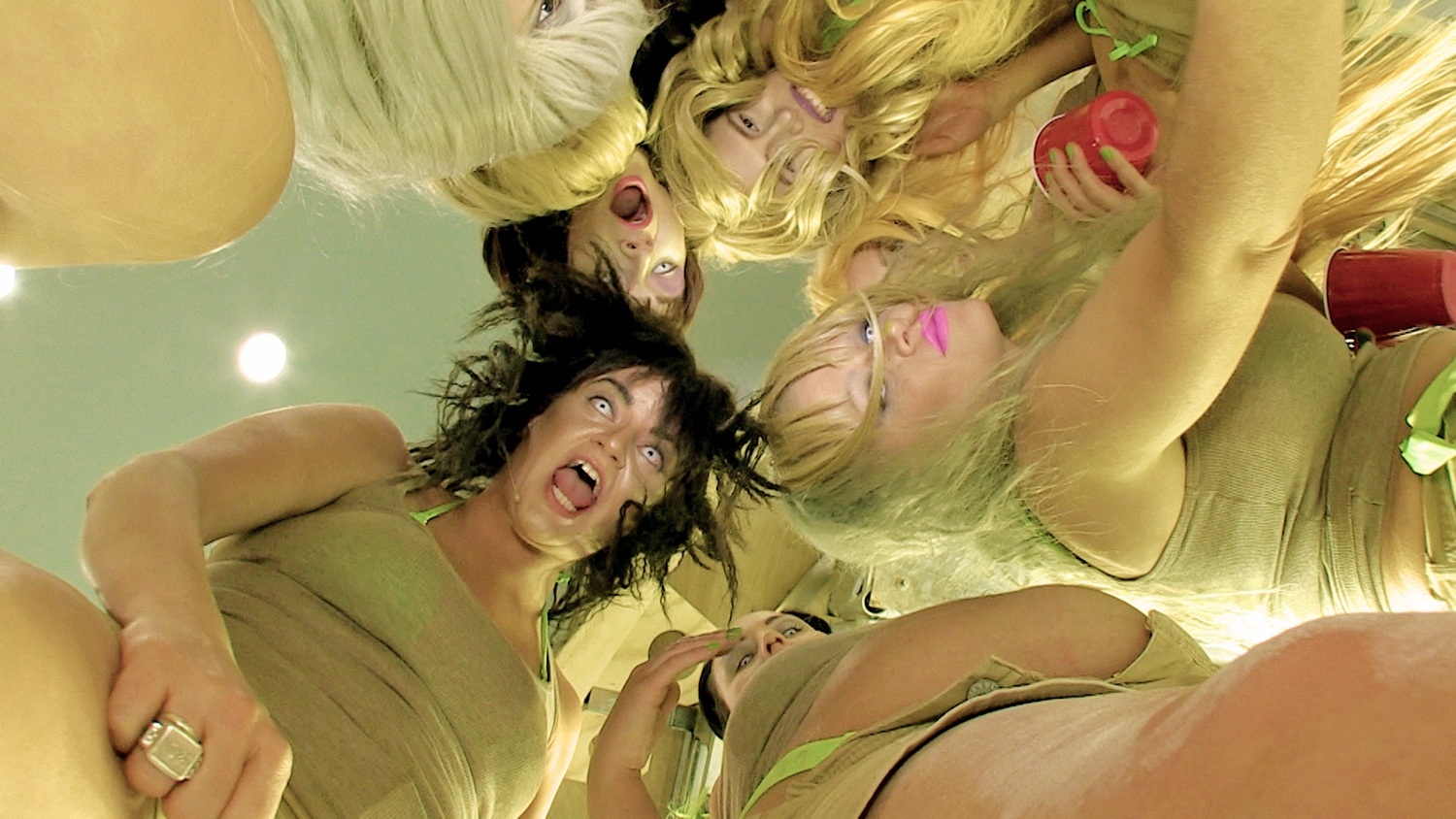When Elvis Mitchell, the well-known film critic and, since 2011, curator of the indie film series, Film Independent, at LACMA, took the stage last Tuesday evening (March 25) to introduce Ryan Trecartin’s four new ‘movies’, he stressed that ‘movies’ are indeed what Trecartin makes, not ‘films’ or ‘videos’, which terms conjure musty art house repertory theaters or white-box galleries turned into black-box screening rooms. No, Trecartin makes ‘movies’, which are meant to be seen on the big screen, and with big sound.
So what the audience was treated to on Tuesday night, a back-to-back screening of Junior War, Comma Boat, CENTER JENNY, and Item Falls (all 2013), we were being told, was something like seeing rare charismatic megafauna in its natural habitat. It was as if Trecartin’s work had finally arrived at the place, Tinseltown, and the apparatus, an actual movie theater, to which it had always belonged or, rather, from which it had issued in the first place. (There is some banal truth to this: in 2010 Trecartin relocated his studio to Burbank, where most of the new work was produced.)
Then, for the next 139 minutes, the audience was subject to an audio-visual ballistics test of which Paul Sharits, he of near seizure-inducing avant-garde films from the 1970s, would be proud.
There is nothing wrong with such eye/ear/mind assaults in themselves, and anyone familiar with Trecartin’s previous work would have been well prepared for his latest offerings, which debuted last year at the Venice Biennale in their own ‘sculptural theaters’, the installation-cum-set-pieces that Trecartin produces with his long-time artistic collaborator Lizzie Fitch. Though the movies are integral to those set pieces, these ‘sculptural theaters’ are not integral to the movies, which theatrical screenings, such as this one at LACMA and a similar one last December at BAM, in Brooklyn, demonstrate. And as is well-known, Trecartin also makes his ‘movies’ available on Vimeo, which is why it was all the more strange for Mitchell to claim the movie theater as the natural environment for Trecartin’s work.
Let me state this plainly: it’s not.
Junior War is a key here. Whereas Comma Boat, CENTER JENNY, and Item Falls share sets and players to explore what one could only loosely call ‘themes’ – doubling, belonging, identity, self-aggrandizement, social positioning; but then plastic pint cups, Beyoncé, and body paint might also qualify – Junior War is composed from footage that Trecartin shot in 1999 while still in high school, and its theme, in short, is belligerence – the kind that comes from being young, drunk, and stoned, surrounded by friends, and in possession of an uncomfortably fat cache of hormones, bad judgment, and cars.
Trecartin’s style of in-your-face camera work is evident. When edited with his signature attention to pacing and masterful use of the jump cut, the result is a frenetic and anxious picture of kids getting up to stupid shit
Using a night-vision video camera, Trecartin captured his friends – and this is just a random sampling – drinking, smoking, playing drinking games, running around the woods, running from cops, smashing mailboxes, smashing televisions, stealing ornamental lawn sculptures, smashing ornamental lawn sculptures, getting pulled over by cops, hiding in basements, riding in the backs of trucks, sleeping in cars, and saying some humorous but never intelligent things. Even at this early stage, Trecartin’s style of in-your-face camera work is evident. When edited with his signature attention to pacing and masterful use of the jump cut, the result is a frenetic and anxious picture of kids getting up to stupid shit.
You are nervous for them. Their behavior is of course typical, a brief puncturing of the suburban familial authority that, like wet wool, chafes and weighs you down yet keeps you warm. What will happen to them when they leave? What kind of prelude will this be?
Just why the ‘we’re-gonna-fuck-shit-up’ impulse is so prevalent in late-teen life is a question, thankfully, that Junior War doesn’t seek to answer. That kind of moral or didactic image making is miles away on cable television somewhere, or deep in a pile of indie film festival submissions. This footage was made in the age of the Internet, but before the advent of social media or YouTube. The computer screen is its home turf. It’s footage that isn’t meant to be ‘screened’; it’s meant to be shared, in the old sense – that is, to be viewed by its participants, to be laughed over and cringed at, and then left in the shoebox that lives in the back of a series of closets – dormitory, shared apartment, first solo pad, house – until old classmates are awkwardly reunited and it is brought back out to be laughed over and cringed at once more.
So if Trecartin’s works are indeed ‘movies’ as Mitchell claimed they are, then they are of a special domestic variety, the kind of ‘home movie’ that only the kids make, the one’s in which they don’t so much act as ‘act out’, for themselves, for their friends, and for no one in particular. Junior War, though far from Trecartin’s first work, is something like his ur-movie then, a kernel of raw affect and energy around which all of his other work, in all of its ornamented, camped-up absurdity, orbits, and to which one wishes it could find a way to return.
Published 1 April, 2014
